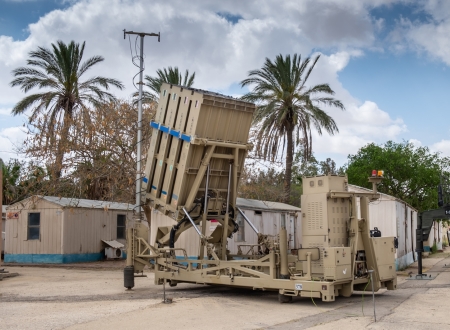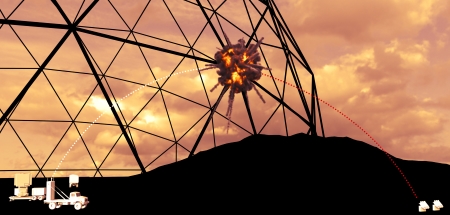Chips: War and Peace is our chosen topic for the day. At ER Precision Optics, we enjoy bringing you stories of 21st-century technological and manufacturing triumphs.
Bringing You Science Behind Chips, and Peace

It’s No Secret That the 21st-Century World Uses Optics and Chips in War and Peace.
You might have noticed our transparency in explaining where the science of our work begins. Take notice of our basic description of growing silicon.
Likewise, you might have enjoyed our exploration of the universe through any one of our articles on the James Webb Telescope.
Thus, we all cherish articles about the peaceful support of technology, manufacturing, and research. However, here in our ER Precision Optics blog, we do not cover only stories about peace and technology.
We also have brought you stories of Chips, in both war and peace. Additionally, we have brought you information about technology to protect our country and the democratic way of life.
The Other Side of Chips, Optics, and Silicon in War and Peace

The Photo Shows Just a Small Section of the Iron Dome Air Defense Missile System.
We have updated you about the less peaceful side of chip and optics development. Technology and optics play a big part in 21st-century war. That is why we named this article “Chips: War and Peace.”
We have written the story of gimbals for our fighter helicopters, an integral piece of equipment to keep our soldiers safe. You also learned about the parts we manufactured for our defensive aircraft.
Therefore, our FLASS blog has demonstrated America needs optics, specially manufactured parts, silicon, and Chips for the defense of our country and our allies, as well as for peace. That’s why we brought you news about such weapons as the drones used in Ukraine.
Chips, in War and Peace: Meet the Iron Dome
Another appropriate example of defense technology is the Iron Dome in Israel. It stands as proof of security and safety with its chips and technology, in war and peace.
It is certainly in the news today. Many people talk about it, but they really do not know what it is. And it is certainly appropriate for our theme of “Chips, in War and Peace.”
Thus, let us present a look at some basic information about the Iron Dome. We are certain you know is not really iron, and not quite a dome, but a great name for a primarily defensive technological system.
Many Parts of The Iron Dome

The Iron Dome Metaphor: Shows the Blocking of Incoming Rocket Fire, Through Israel’s Radar and Interceptors.
The Iron Dome is often thought of as one piece of technology. It is actually made of three.
1. According to BBC, it begins with a sensitive radar array that “detects an incoming round of” rockets. They might be fired from 2.5 to 43 miles away.
2. It then predicts the trajectory and point of impact.
3. A center of control will receive and interpret the information. It communicates with a launcher “that shoots a missile to destroy the round.” ER Precision Optics lauds the fact that every part of the system relies on Chips. And chip relies on crystals, like the ones we grow.
Delicate Details Underlying the Iron Dome
- We want you to know that the Iron Dome system responds to rockets that pose a problem to population centers. Believe it or not, it can hold fire on rockets that will land in vacant areas.
- Thus, the Iron Dome saves the waste of missiles. And, just in case you did not know, the cost of such missiles runs between $40,000 and $50,000.
- You might also like to know that the Iron Dome has both mobile and permanent batteries of the interceptive rockets that do this defensive job. Additionally, “as of mid-2021, Israel had ten of them deployed throughout the country…”
A Little Backstory on the Chips, War and Peace: Running the Iron Dome
We can find more information from the “US military contractor Raytheon Technologies.” As you might already know, they began co-producing Iron Dome with the system’s originator, Israel’s Rafael Advanced Defense Systems” in 2014.
- “Each battery has three to four launchers with the aim of defending a 155-square-kilometer (60-square-mile) populated area, according to Raytheon.
- And, you might question, “What can the Iron Dome do in extreme weather like wind, sand, or rain?” Raytheon and Rafael created the system to function in every type of weather.
Low Tech Hamas Vs. High Tech Iron Dome
In research, Precision ER Optics wondered why the recent relatively low-tech attacks of Hamas seemed to beat the high technology inherent in the Iron Dome.
It was a matter of numbers. Previous attacks lobbed small numbers of rockets and missiles at the dome. And the Iron Dome was “90% effective against a range of threats.” Israel’s Iron Dome air defense system works well – Here’s how Hamas got around it.
So what happened to hamper the great system?
According to the Colorado Arts and Science Magazine, “It is a simple question of numbers. Hamas fired several thousand missiles, and Israel had less than a thousand interceptors in the field ready to counter them.” In simple terms, massive numbers of missiles overwhelmed the system. And, to add insult to injury, every missile fired at the dome only cost Hamas about 600.00.
A Bitter Lesson for the World
The International community has therefore discovered a new and terrible lesson. We must be empowered with “a much deeper arsenal of defensive weapons that can address very large numbers of missile threats.” Likewise, we must lower the cost of defensive weapons.
A Lesson for Research and Development

As Humanity Continues to Develop Technology, We Face Choices About Using It to Protect America’s Way of Life with “Chips in War and Peace.”
The war between Hamas and Israel will probably stimulate the development of directed energy air defense systems. They sound like a step into science fiction. But they are simply defense systems that work off of high-energy microwaves and high-powered lasers, as described by the Congressional Research Service.
Further research adds that such devices will have an infinite magazine. That’s how cheap it will be to arm the futuristic systems. That is, as long as they are powered with electricity. And yes, they will still require Chips, silicon, and precision optics.
A Final Thought Concerning Chips: War and Peace
If and when such an advanced defensive system is armed with lasers instead of missiles, will Israel still call it the Iron Dome? We believe the answer is “yes,” because the human heart will still be made of iron.


